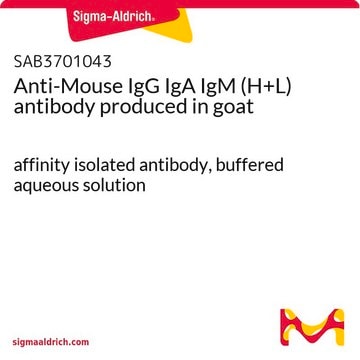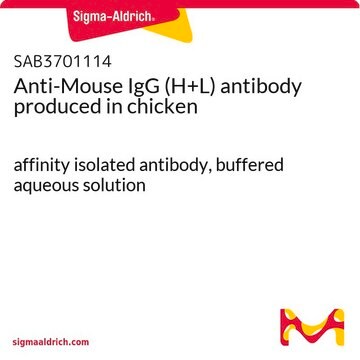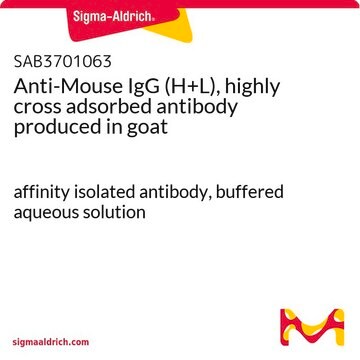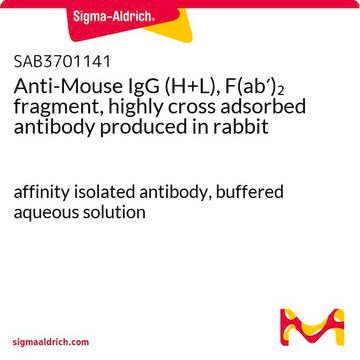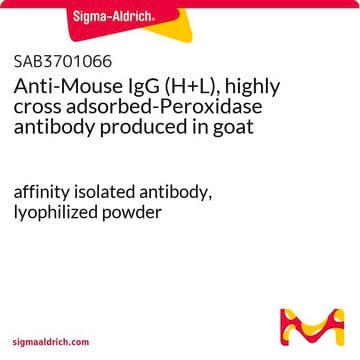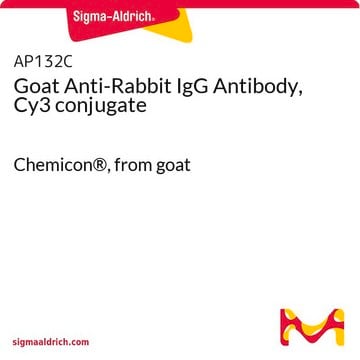추천 제품
생물학적 소스
rabbit
결합
unconjugated
항체 형태
affinity isolated antibody
항체 생산 유형
secondary antibodies
클론
polyclonal
형태
buffered aqueous solution
종 반응성
mouse
농도
2.0 mg/mL
기술
immunohistochemistry: suitable
indirect ELISA: suitable
western blot: suitable
배송 상태
wet ice
저장 온도
2-8°C
타겟 번역 후 변형
unmodified
특이성
This product was prepared from monospecific antiserum by immunoaffinity chromatography using Mouse IgG coupled to agarose beads followed by solid phase adsorption(s) to remove any unwanted reactivities. Assay by immunoelectrophoresis (IEP) resulted in a single precipitin arc against Anti-Rabbit Serum, Mouse IgG and Mouse Serum. No reaction was observed against Human Serum Proteins.
면역원
Mouse IgG whole molecule
물리적 특성
Antibody format: IgG
물리적 형태
Supplied in 0.02 M Potassium Phosphate, 0.15 M Sodium Chloride, pH 7.2
면책조항
Unless otherwise stated in our catalog or other company documentation accompanying the product(s), our products are intended for research use only and are not to be used for any other purpose, which includes but is not limited to, unauthorized commercial uses, in vitro diagnostic uses, ex vivo or in vivo therapeutic uses or any type of consumption or application to humans or animals.
Not finding the right product?
Try our 제품 선택기 도구.
Storage Class Code
10 - Combustible liquids
Flash Point (°F)
Not applicable
Flash Point (°C)
Not applicable
시험 성적서(COA)
제품의 로트/배치 번호를 입력하여 시험 성적서(COA)을 검색하십시오. 로트 및 배치 번호는 제품 라벨에 있는 ‘로트’ 또는 ‘배치’라는 용어 뒤에서 찾을 수 있습니다.
Mathilde Mathieu et al.
Nature communications, 12(1), 4389-4389 (2021-07-21)
Despite their roles in intercellular communications, the different populations of extracellular vesicles (EVs) and their secretion mechanisms are not fully characterized: how and to what extent EVs form as intraluminal vesicles of endocytic compartments (exosomes), or at the plasma membrane
Lorena Martin-Jaular et al.
The EMBO journal, 40(8), e105492-e105492 (2021-03-13)
Cells release diverse types of extracellular vesicles (EVs), which transfer complex signals to surrounding cells. Specific markers to distinguish different EVs (e.g. exosomes, ectosomes, enveloped viruses like HIV) are still lacking. We have developed a proteomic profiling approach for characterizing
자사의 과학자팀은 생명 과학, 재료 과학, 화학 합성, 크로마토그래피, 분석 및 기타 많은 영역을 포함한 모든 과학 분야에 경험이 있습니다..
고객지원팀으로 연락바랍니다.
